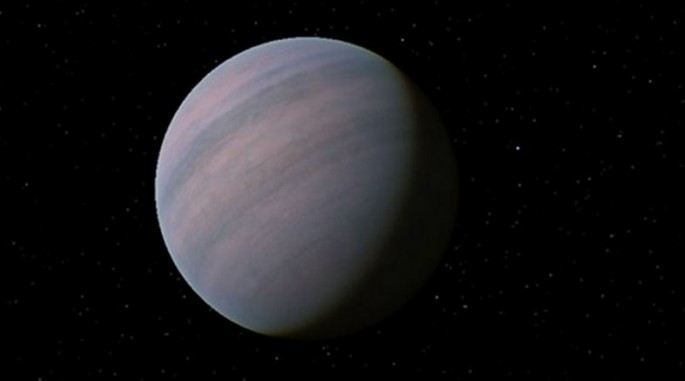The first exoplanet ever discovered in a habitable or "Goldilocks Zone" is again the prime candidate in the search for alien life.
Discovered in 2007, the exoplanet Gliese 581d was then described as a "super-Earth" with the potential to support liquid water and probably microbial life on its possibly rocky surface. The huge exoplanet located only 20 million light years from Earth had a mass some seven times that of the Earth.
Gliese 581d, however, was twice as big as the Earth with a surface gravity also around twice that of Earth, said Discovery News. Despite this, scientists believed the planet might harbor life if it had a suitable atmosphere.
Gliese 581d orbits on the outer fringes of the habitable zone of its star, Gliese 581, where it's not so hot water boils away nor so cold water is perpetually frozen. Instead, the temperature is just right for water to exist in liquid form.
At the time, France's National Center for Scientific Research said the climate of Gliese 581d is not only stable against collapse but warm enough to have oceans, clouds and rainfall.
But Gliese 581d was later dismissed as a candidate in the hunt for life because it receives less than a third of the solar radiation the Earth gets. It might also be "tidally locked," meaning one side of it always faces the sun, which would give it permanent dayside and nightside.
Gliese 581d was also ruled out as a harbor for life because its star is a small M-class dwarf star that often generated violent flares. Ultimately, the opinion prevailed Gliese 581d didn't exist at all and was just "noise" found in astronomical data sets.
The planet was detected orbiting Gliese 581 by an astronomical technique known as the "radial velocity method" that measured the very slight frequency shift (Doppler shift) of light from the star caused by a nearby planet.
There were previous observations indicating Gliese 581d has a surface temperature cool enough for water to exist on its surface and possibly support microbial life. Scientists didn't think this planet was habitable enough and considered its discovery just "noise" found in astronomical data sets and not due to the presence of a habitable world.
Now, however, researchers from the Queen Mary University of London and the University of Hertfordshire believe Gliese 581d is truly a habitable exoplanet and that scientists were actually right in supposing it was when they first discovered Gliese 581d.
The existence of Gliese 581d will always be significant since it's the first planet found in the "Goldilocks Zone" or the habitable zone in another star system and has been the benchmark case for the Doppler method, said lead researcher Guillem Anglada-Escudé in a study published in the journal, Science.
"There are always discussions among scientists about the ways we interpret data but I'm confident that GJ 581d has been in orbit around Gliese 581 all along. In any case, the strength of their statement was way too strong. If the way to treat the data had been right, then some planet search projects at several ground-based observatories would need to be significantly revised as they are all aiming to detect even smaller planets."
The QMUL team used a more accurate model with existing data and reclassified Gliese 581d as one of the most probable exoplanets similar to ours outside the solar system.



























